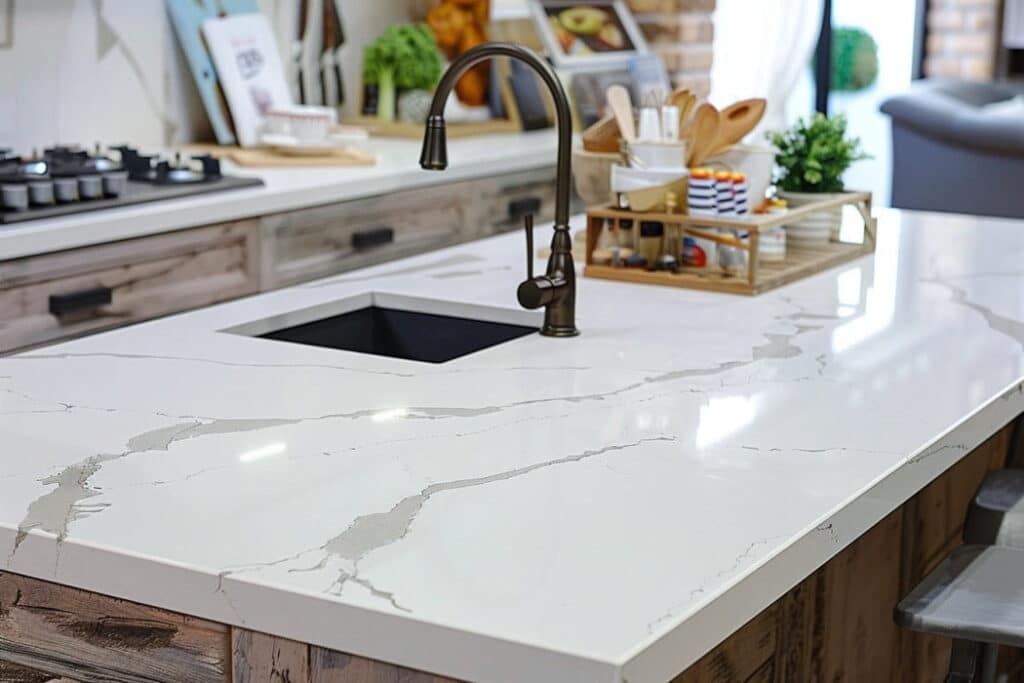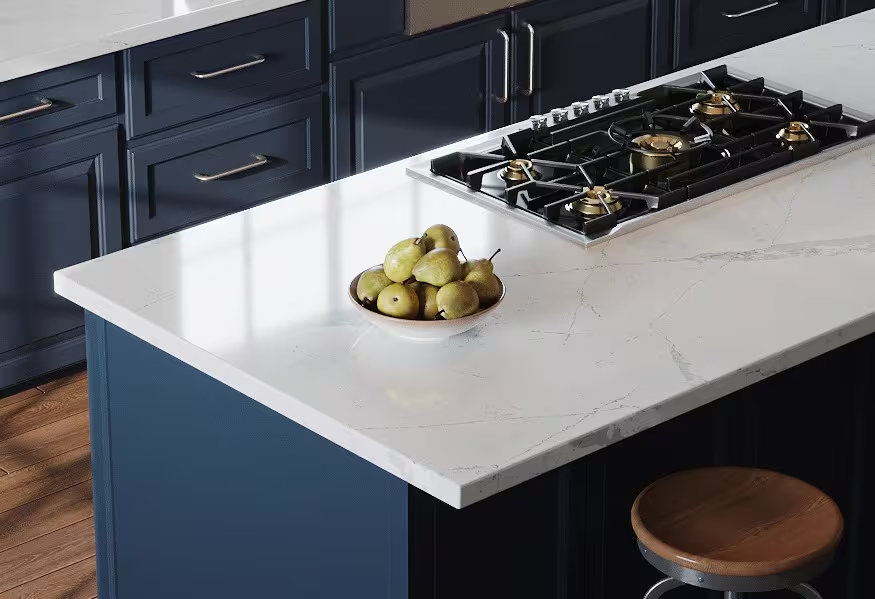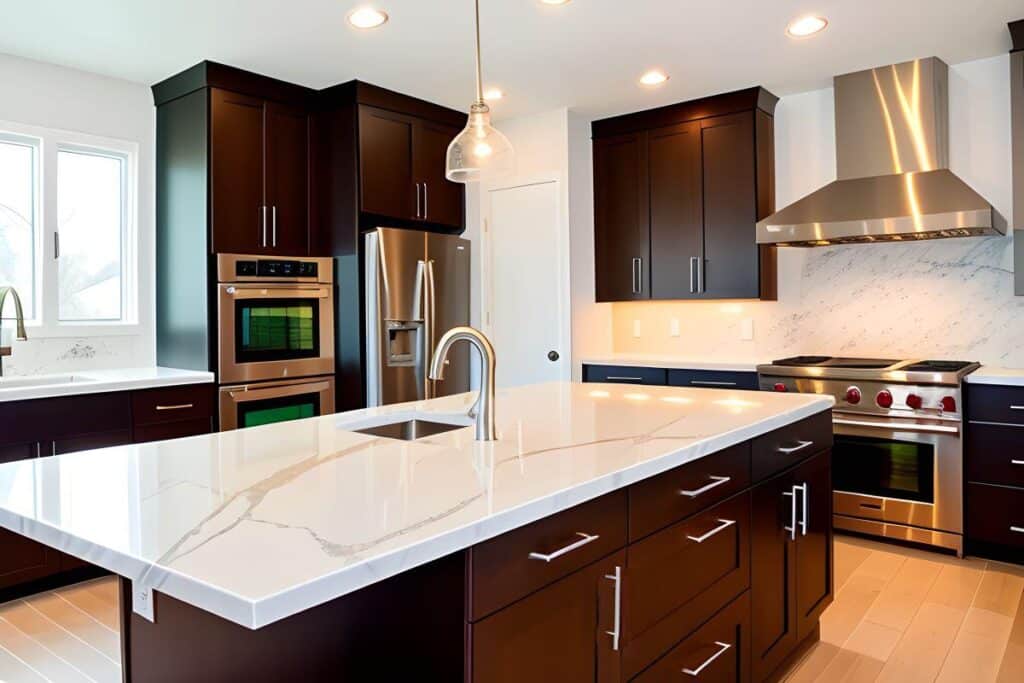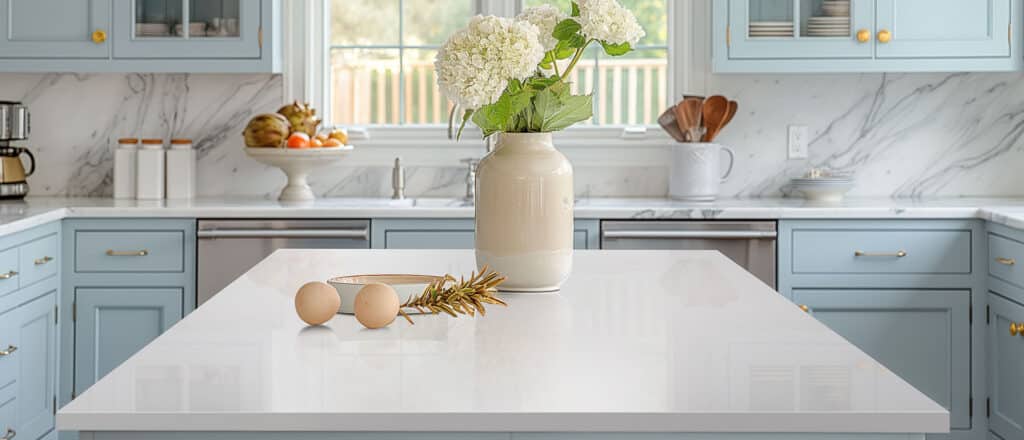Quartz Countertops in Cincinnati
Why to Choose Quartz for Your Remodel
Quartz countertops have gained popularity over the past few decades. Made from stone-like materials bound with resins, they don’t require sealing, unlike natural stones. Quartz is made up of 93% stone materials and 7% binders, making it durable and non-porous. Originally patented in 1963 by Breton, quartz countertops are now produced by companies like DuPont and Cambria, using Breton’s technology.
Quartz comes in a variety of colors, patterns, and finishes, often mimicking marble or other natural stones. With so many options, choosing the right one can be tough. Our design team is here to help you find the perfect quartz countertop for your kitchen or bathroom remodel.
Quartz was originally patented in 1963 by an Italian company, Breton, and the brands of quartz today all come from Breton. Bretonstone technology is currently licensed to more than 50 companies across the globe, with other companies, such as DuPont, Cambria and Cosentino using Breton’s patent for their own quartz products. In other words, even though individual manufacturers add their own nuances to quartz countertops, they still work off the original patent.
Given the abundance of options to choose from, it can be difficult to land on exactly which countertop to pick. We want to help. Our design team can assist you in choosing the perfect quartz countertop for your kitchen or bath remodel.


What are the advantages of quartz countertops?
Quartz countertops offer several advantages. They have a natural luster and 3D appearance that mimics natural stone. Quartz is hard, durable, and has fewer imperfections, making installation easier. As an engineered product, it’s available in a wide range of colors. Quartz is also more eco-friendly since it’s made from by-products of other manufacturing processes, unlike natural stone.
Quartz requires no sealant and resists scratches, cracks, stains, and bacteria, making it easy to maintain. It’s a great choice for a stylish, durable, and low-maintenance countertop.
What are the disadvantages of quartz countertops?
Quartz countertops can be expensive, running from $60 to $100 per square foot for the higher quality brands. That being said, quartz still costs about 18 percent less than granite on average, although it is more expensive than solid surface countertops. While quartz is great for kitchens and baths, if exposed to outside elements for a prolonged period of time, quartz will react to sunlight by fading.
When used outside, quartz countertops are more likely to be scratched when exposed to the elements. While quartz is resistant to heat, it is not perfectly heat-resistant. Counters that are longer than 120 inches or involve a complex configuration will require fabrication of more than one section, meaning there will be seams. A dark-toned quartz may not show the seams as much as a lighter-colored or multicolored quartz countertop.

What Things Should I Consider Before Choosing My Quartz Countertops?
Budget
The average price for quartz countertops—minus installation fees—is about $75 per square ft. Lower-quality quartz may run from $50-$60 per square ft, mid-quality quartz between $60-$70 per square ft., and high-quality quartz countertops are typically between $70-$100 per square ft. Remember that your edge design choice will also determine the final price.
Type and Quality
Dimensions
The thickness of quartz countertops range from ½” to 1 ¼”, depending on the brand, size and style. If an elaborate edge design is chosen, a thicker slab may be required.
Décor and Style

What does the process look like to replace and install quartz countertops?
Those in the greater Cincinnati area who are considering a kitchen or bath remodel often must consider new countertops, and you might be curious about the installation process. Choosing to work with a professional from Countertops and Cabinetry by Design will allow you to clearly understand these essential installation steps. Your countertop installation expert will measure current countertops and cabinets in order to establish baseline dimensions, answering any questions you might have at this time.
After an overall plan has been agreed on, your Countertops and Cabinetry by Design professional will prepare a price estimate which covers the entire process—including your choice of quartz countertop material. You will choose your pattern, color and edge design, and then the fabrication process will begin. A template will be created, then when the fabrication process is complete, your installation professionals will spend the necessary time in your home to complete your countertop installation. Your old countertops will be disassembled and removed, then the new countertops put into place.
